How To Make A Butterfly Watering Station? Simple Steps!
To create a butterfly watering station, start by choosing a sunny, sheltered spot near flowers. Use a shallow, textured dish and fill it with clean water. Add pebbles or gravel to provide landing spots for the butterflies.
Opt for non-toxic, brightly colored dishes with ridges to attract them. Regularly refill and clean the dish to maintain freshness and proper drainage, using natural disinfectants like vinegar to avoid harmful chemicals.
Position the station close to nectar-rich plants and consider adding honey or fruit juice to the water to entice more butterflies. Learn how to fine-tune your station for maximum butterfly appeal.
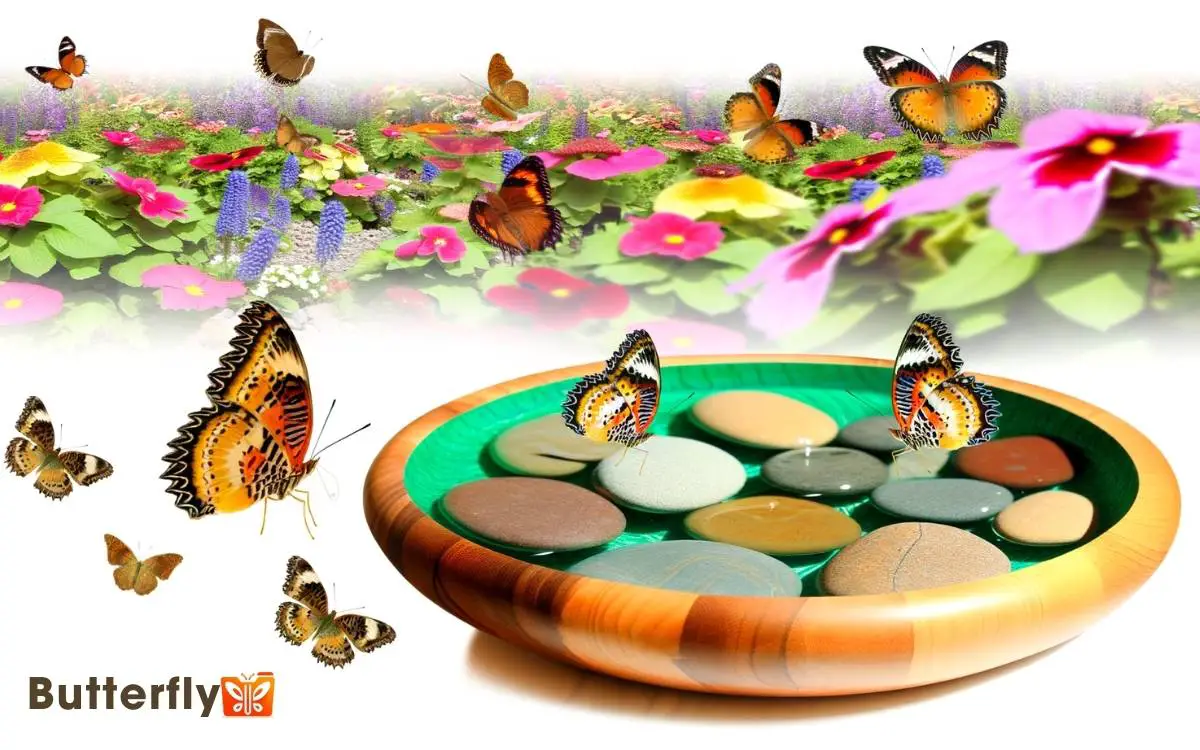
Key Takeaways
Choose the Right Location
Selecting the best location for your butterfly watering station is essential to guarantee it attracts and supports the maximum number of butterflies. Locate a sunny spot, as butterflies are ectothermic and rely on warmth to become active.
Make sure the area is sheltered from strong winds, which can hinder their flight and deter them. Proximity to nectar-rich flowers will increase the likelihood of visits. Opt for a spot with some nearby foliage or rocks to provide perching surfaces and protection from predators.
Avoid placing the station near busy human activity, as disturbances can deter butterflies. By carefully choosing a location with these factors in mind, you’ll create an inviting and efficient hydration hub for your fluttering visitors.
Gather Your Materials
Now that you’ve pinpointed the perfect spot, let’s gather the necessary materials for constructing your butterfly watering station. You’ll need a shallow dish or bowl, some small stones or sand, and fresh water to create a welcoming space for butterflies. Placing the station near nectar-rich flowers will help attract these delicate pollinators, especially if you have a butterfly garden in Florida, where native plants thrive year-round. Make sure to refill the water regularly to keep your fluttering visitors coming back!
- Start with a shallow dish, preferably one with a textured surface.
- Next, get some small pebbles or gravel; these will provide landing spots for butterflies.
- You’ll also need clean water, ideally free of chlorine or other chemicals. To attract butterflies, consider adding a pinch of salt or a drop of sugar to the water.
- Finally, gather natural materials like sticks or leaves to blend the station with its environment.
- Make sure all items are clean to avoid introducing contaminants.
This combination of materials will create an inviting and functional hydration spot for your fluttering visitors.
Select a Shallow Dish
Select a dish that’s shallow and wide, ensuring it has a textured surface to prevent butterflies from slipping while they hydrate. A shallow dish minimizes the risk of drowning while maximizing accessibility for butterflies.
Consider the following characteristics when choosing your dish:
- Material: Opt for a non-toxic material like ceramic or glass, which won’t leach harmful chemicals.
- Design: Prioritize dishes with ridges or a rough bottom to offer grip for the delicate butterfly legs.
- Color: Butterflies are attracted to bright colors, particularly red, orange, and yellow.
Add Decorative Stones
To create an inviting and safe environment for butterflies, place a layer of decorative stones inside the dish, ensuring they are smooth to prevent any harm to the delicate insects.
Position the stones thoughtfully to mimic a natural setting. This provides butterflies with secure perches to rest and drink.
| Stone Type | Color Variations | Texture |
|---|---|---|
| River Stones | Gray, Brown, White | Smooth |
| Pebbles | Multicolored | Rounded |
| Polished Gemstones | Blue, Green, Red | Glossy |
| Flat Marbles | Clear, Blue, Amber | Slick |
Utilize different shapes and sizes to enhance both functionality and aesthetics. The stones should cover the base of the dish uniformly, offering multiple landing spots. This not only attracts butterflies but also contributes to the overall visual appeal of your watering station.
Fill With Fresh Water
You’ll need to use a shallow dish to guarantee easy access for butterflies.
- Add small stones to the dish to provide perching spots and prevent drowning.
- Refill the dish regularly to maintain a fresh water source and support butterfly hydration.
Use Shallow Dish
A shallow dish filled with fresh water provides an ideal hydration source for butterflies. Its flat design ensures easy access and reduces the risk of drowning.
Choose a dish no deeper than one inch to maintain a perfect water level. This simplicity makes it perfect for butterfly hydration.
Make sure the dish is:
- Wide enough to accommodate multiple butterflies at once, promoting a communal watering spot.
- Stable to prevent tipping and spilling, which could waste water and create hazards.
- Non-toxic and safe, avoiding materials that might leach harmful substances into the water.
Add Small Stones
Enhance the effectiveness of your butterfly watering station by adding small stones to the dish, which provide perching spots and further minimize the risk of drowning.
Select smooth, flat stones to create stable resting platforms. Arrange these stones evenly, ensuring they are partially submerged to allow butterflies easy access to water without submersion.
Adding stones also helps maintain water stability by reducing surface tension and promoting gradual evaporation.
| Benefits of Small Stones | Description |
|---|---|
| Perching Spots | Provides safe resting areas for butterflies. |
| Drowning Prevention | Minimizes the risk of butterflies falling into water. |
| Water Stability | Reduces surface tension, promoting stability. |
| Gradual Evaporation | Enhances water retention and evaporation balance. |
| Aesthetic Appeal | Adds visual interest and mimics natural environments. |
Fill the dish with fresh water, ensuring the stones remain visible and accessible.
Refill Regularly
Consistently refilling the dish with fresh water guarantees that your butterfly watering station remains an inviting and safe hydration source for these delicate insects.
Fresh water prevents the buildup of harmful bacteria and algae, ensuring that butterflies have a clean, healthy environment.
Neglecting to refill can lead to stagnant water, which isn’t just unattractive but also potentially harmful.
To maintain ideal conditions:
- Monitor daily: Check water levels and quality, especially during hot weather.
- Use distilled or rainwater: Tap water may contain chemicals harmful to butterflies.
- Clean regularly: Rinse the dish and stones weekly to remove any contaminants.
Incorporate Natural Elements
Incorporate natural materials like stones, sand, and branches to create a more inviting habitat for butterflies. Guarantee these elements blend seamlessly with the surrounding environment to mimic their natural habitat.
This approach not only attracts butterflies but also supports their ecological needs.
Use Natural Materials
Using natural materials like stones, wood, and sand won’t only make your butterfly watering station more aesthetically pleasing but also create a more inviting environment for the butterflies. By incorporating these elements, you enhance both functionality and visual appeal.
- Stones: Choose flat, smooth stones for butterflies to rest on. These provide necessary basking spots to raise their body temperature.
- Wood: Use untreated wood pieces to add structural diversity. They offer perching sites and help retain moisture.
- Sand: Fill shallow dishes with sand to mimic natural puddling sites. This allows butterflies to extract essential minerals.
Each component serves a specific ecological purpose, ensuring your station is scientifically grounded and innovative. Combining these materials encourages natural behaviors, making your watering station an essential habitat feature.
Blend With Environment
Integrating your butterfly watering station seamlessly into its surroundings will make it more appealing to butterflies and enhance its ecological effectiveness. Start by choosing natural materials like stones, wood, and plants native to your area.
Position your station near flowering plants that attract butterflies, such as milkweed or coneflowers.
Use flat stones to create a natural landing platform, ensuring they’re stable and slightly submerged. Incorporate small, shallow puddles with varied depths, mimicking natural water sources.
Surround the station with mulch or leaf litter to blend it with the environment and provide additional resting spots. By doing this, you create a microhabitat that not only attracts butterflies but also supports their lifecycle, promoting biodiversity in your garden.
Ensure Proper Drainage
Ensuring proper drainage is essential to prevent water from stagnating and becoming a breeding ground for harmful bacteria in your butterfly watering station. You’ll want to incorporate elements that facilitate quick water flow and evaporation.
Here’s how to achieve this:
- Elevate the Station: Place the watering station on a slight incline or use legs to lift it, ensuring water can easily escape.
- Use Porous Materials: Employ a base of gravel or small stones which allows water to seep through while providing butterflies with a safe landing surface.
- Drill Drainage Holes: If you’re using a container, drill multiple small holes at the bottom to allow excess water to drain out efficiently.
Maintain Regularly
To keep your butterfly watering station effective, you need to clean it weekly to prevent algae and bacterial buildup.
Refill it with fresh water regularly to guarantee the butterflies have a constant, clean source.
Clean Station Weekly
Regularly clean your butterfly watering station each week to prevent mold and algae buildup, guaranteeing a safe environment for the butterflies.
Start by gently removing any debris or leftover organic matter. Use a soft brush to scrub the surfaces, focusing on crevices where mold might thrive.
- Disinfect with vinegar solution: Mix one part vinegar with four parts water to create a natural disinfectant.
- Rinse thoroughly: Make sure all cleaning residues are removed to avoid harming the butterflies.
- Dry completely: Allow the station to air dry fully before refilling to minimize mold regrowth.
Refill Fresh Water
Refill the butterfly watering station with fresh water every few days to guarantee the availability of clean hydration and prevent stagnation. Stagnant water can become a breeding ground for harmful bacteria and mosquitoes, compromising the station’s effectiveness.
Use distilled or rainwater, as tap water may contain chlorine and other chemicals that could deter butterflies. Monitor the water level regularly, especially during hot weather, as evaporation rates increase. Implement a schedule to maintain consistency in refilling.
Additionally, adding a few small stones or sponges can provide perching spots for butterflies, enhancing their drinking experience.
By maintaining fresh water, you support a healthy ecosystem and attract more butterflies, contributing to their well-being and your garden’s biodiversity.
Attracting Butterflies
Creating an effective butterfly watering station involves selecting plants with vibrant flowers that produce ample nectar to attract these delicate pollinators. You’ll want to focus on species that offer both visual appeal and nutritional value.
Consider incorporating:
- Milkweed: Essential for monarchs, providing both nectar and a place for laying eggs.
- Buddleia (Butterfly Bush): Known for its fragrant, nectar-rich flowers that attract various butterfly species.
- Lantana: Offers clusters of brightly colored flowers favored by many butterflies.
These plants won’t only draw butterflies but also support their lifecycle, ensuring a thriving habitat.
Position your watering station nearby to enhance the chances of frequent visits. This approach creates a sustainable environment, fostering biodiversity and promoting ecological balance in your garden.
Additional Tips and Tricks
To optimize your butterfly watering station, make sure the water source is shallow and includes pebbles or marbles for the butterflies to safely land on while drinking.
Additionally, consider adding a few drops of honey or fruit juice to the water to attract butterflies more effectively.
- Position your station in a sunny spot, as butterflies are more active in warm environments.
- Regularly clean and refresh the water to prevent stagnation and algae growth.
- Furthermore, plant nectar-rich flowers nearby to create an inviting habitat.
- Finally, avoid using pesticides in the vicinity, as they can harm butterflies.
Conclusion
So, you’ve set up your butterfly watering station, but will it really attract butterflies? Research supports that butterflies are drawn to shallow water sources with plenty of landing spots.
The rough texture of stones mimics their natural habitats, making them feel safe. By maintaining clean water and monitoring the station daily, you’re creating an inviting environment.
Science proves that butterfly watering stations, when properly maintained, can indeed support local butterfly populations. Keep observing and enjoy the fluttering visitors!


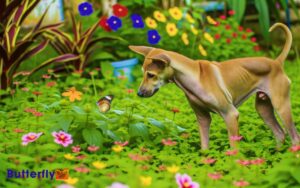
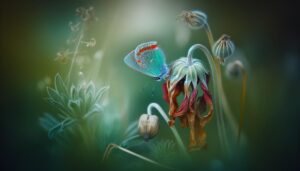

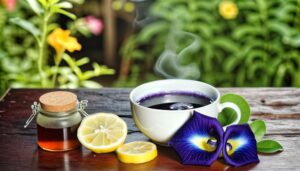
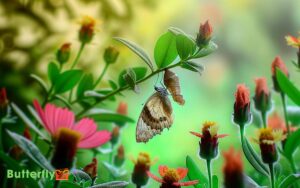
маркетплейс аккаунтов соцсетей профиль с подписчиками
продажа аккаунтов магазин аккаунтов
магазин аккаунтов перепродажа аккаунтов
купить аккаунт с прокачкой https://ploshadka-prodazha-akkauntov.ru/
гарантия при продаже аккаунтов https://prodat-akkaunt-online.ru/
безопасная сделка аккаунтов продажа аккаунтов
маркетплейс аккаунтов соцсетей услуги по продаже аккаунтов
Sell accounts Buy and Sell Accounts
Account Buying Platform Accounts marketplace
Guaranteed Accounts Account Selling Platform
Account Selling Platform Database of Accounts for Sale
Secure Account Purchasing Platform https://accountsmarketplacehub.com
Online Account Store Accounts for Sale
Buy Pre-made Account buyagedaccounts001.com
Verified Accounts for Sale Account Trading
Account Sale Account Purchase
Marketplace for Ready-Made Accounts Account Exchange Service
account buying platform verified accounts for sale
account trading marketplace for ready-made accounts
accounts market accounts marketplace
account store marketplace for ready-made accounts
website for buying accounts account trading service
verified accounts for sale account trading platform
guaranteed accounts https://socialaccountsdeal.com/
online account store account selling service
profitable account sales discountaccountsmarket.com
guaranteed accounts guaranteed accounts
account sale find accounts for sale
account trading platform accounts market
website for selling accounts purchase ready-made accounts
sell accounts social media account marketplace
account catalog accounts marketplace
account buying platform buy pre-made account
account buying service social-accounts-marketplace.org
account market online account store
find accounts for sale ready-made accounts for sale
buy account accounts marketplace
ready-made accounts for sale account trading platform
secure account sales accounts marketplace
sell accounts sell account
sell accounts purchase ready-made accounts